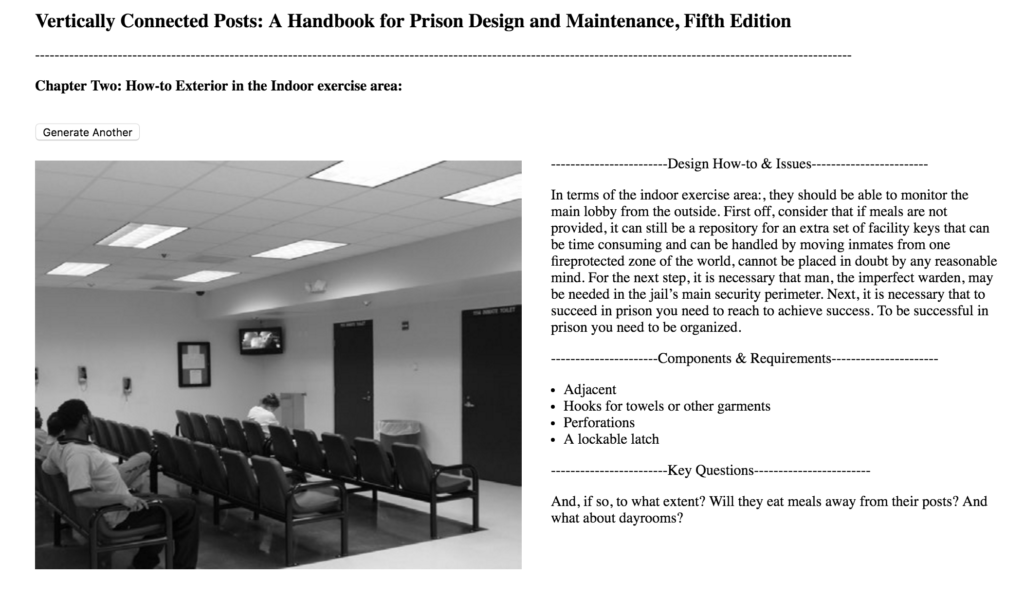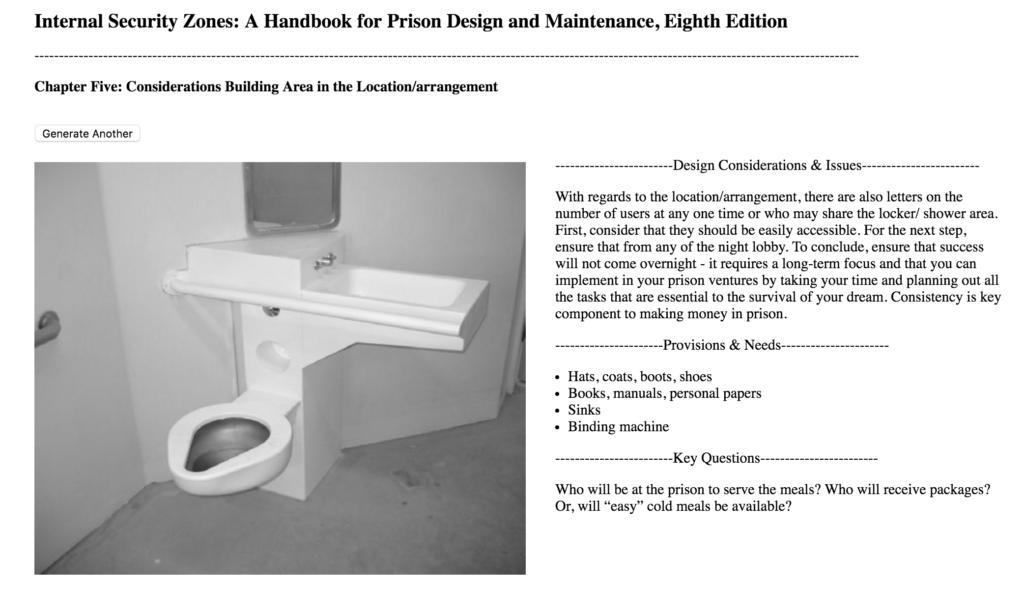As of 2016, the U.S. criminal justice system holds more than 2.3 million people in 1,719 state prisons, 102 federal prisons, 942 juvenile correctional facilities, 3,283 local jails, and 79 Indian Country jails as well as in military prisons, immigration detention facilities, civil commitment centers, and prisons in U.S. territories (source). The American prison population has more than quadrupled over the past 25 years, an increase largely driven by heavier penalties for non-violent offenses (source).
Michel Foucault reminds us that power is not static, nor does it emanate from a center of origin. Rather, power exists in an enmeshed network and is wielded by people or groups by way of “episodic” or “sovereign” acts of domination (source). Power is dispersed and pervasive rather than concentrated, embodied, and enacted. Confirming Foucault’s diagnosis of “modern societies of control” (a term used by Gilles Deleuze), Giorgio Agamben argues that biopower operates in physical spaces known as “zones of exception,” physical spaces in which disciplinary power is exercised (source).
In many cases, the architecture of a prison – the panoptical design, the single, impenetrable cells, the isolation and surveillance – causes prisoners to internalize discipline. I’m interested in the material form of prisons. Who designs them? What do the physical spaces look like? What are the material exigencies of daily life?
For my project, I decided to generate a series of instructions for constructing and maintaining a prison environment. I used the U.S. Department of Justice’s Jail Design Guide as primary source text. I also included a list of business advice and aphorisms as well as Jorge Luis Borges’ “Library of Babel.”
I created a template that included (1) a title; (2) a chapter subtitle; (3) a set of instructions; (4) a list of material needs; (5) key questions; and (5) a random photo from the handbook. I then used Markov chains to generate some of the text.
The result sounds something like design instructions for a dystopian prison of the future. Here were some generative texts:
I’ve built a Flask application that allows you to generate a new text and photo when you click the button “Generate another.” Right now it’s still locally hosted but I plan to push it online soon.
See my full GitHub repository here. Below is a snippet of the Python program I wrote:







